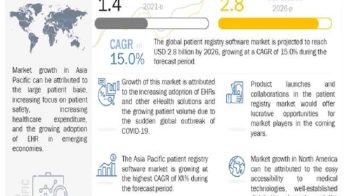The Different Types of X-Ray Detectors
- Photostimulable phosphor imaging plates: These plates are used for imaging and storing the x-rays. They are made of a special phosphor material that absorbs the x-rays and releases a visible light when stimulated by a laser.
- CCD detectors: CCD detectors are charge-coupled devices that detect the x-rays and convert them into digital signals. They are capable of producing high-resolution images with high contrast and can be used in a variety of applications such as medical imaging.
- Photodiodes: Photodiodes are used to detect the x-rays by converting them into electrical signals. They are used in medical imaging, industrial applications, and security systems.
- Gas-filled proportional counters: Proportional counters are used to detect x-rays by converting them into electrical signals. They are used in medical imaging and industrial applications.
- Scintillation crystals: Scintillation crystals are used to detect x-rays by converting them into visible light. They are used in medical imaging, industrial applications, and security syastems.
Advantages and Disadvantages of X-Ray Detectors
- Advantages:
- X-Ray detectors are highly sensitive and can detect very small differences in material density.
- X-Rays can penetrate through most materials, allowing them to be used to inspect the interior of objects.
- X-Rays are relatively safe to use, as the radiation they emit is usually low dose.
- X-Ray detectors are relatively inexpensive and easy to use.
- Disadvantages
- X-Rays can be dangerous if used improperly, as they can cause radiation damage
- X-Ray detectors cannot be used to detect metals or other materials which do not absorb X-Rays.
- X-Ray detectors are limited in their ability to detect very small objects.
- X-Ray detectors can be very expensive and require specialized equipment.
The Latest Developments in X-Ray Detectors
- High-Resolution X-Ray Detectors: The latest X-ray detectors are capable of producing images with a much higher resolution than previous models, with resolutions up to 50 microns. This allows for more detailed analysis of medical images.
- Flat Panel Detectors: Flat panel detectors are now available for digital X-ray imaging, providing a more efficient and cost-effective way to produce high-quality images.
- Cone Beam Computed Tomography (CBCT): CBCT is a type of X-ray imaging that is able to capture 3D images of the body. This technology is often used for medical imaging, as it is able to provide detailed images of areas that are difficult to image using traditional X-ray techniques.
- Digital Subtraction Angiography (DSA): DSA is a type of X-ray imaging that is used to produce images of blood vessels. This type of imaging is often used in diagnosing and treating vascular diseases.
- Digital Radiography (DR): DR is a type of X-ray imaging that produces images of the body in a digital format, allowing for easier processing and storage of the images. This type of imaging is often used
Future of X-Ray Detectors Industry
X-ray detectors are constantly evolving as technology advances. In the future, we can expect to see smaller and more powerful X-ray detectors that will be able to detect a wider range of radiation. This will allow doctors to diagnose and treat illnesses more accurately and efficiently. Furthermore, new technologies, such as artificial intelligence, will enable X-ray detectors to detect more subtle changes in the body that could be indicative of disease. Ultimately, the goal is to create X-ray detectors that are more accurate and efficient than ever before.
X-Ray Detectors Industry Growth
The global X-Ray Detectors market is projected to reach USD 4.0 billion by 2027, growing at a CAGR of 5.2% from 2022 to 2027. Factors such as the growing demand for computed tomography (CT) and digital radiography (DR) systems, the increasing investments in healthcare infrastructure, the growing prevalence of chronic diseases, the rising geriatric population, and the growing demand for portable X-Ray imaging systems are driving the growth of the X-Ray Detectors market. Additionally, technological advancements in X-Ray detectors and the increasing demand for advanced imaging technologies are expected to provide lucrative opportunities for the X-Ray Detectors market in the coming years.
X-Ray Detectors Market Players
Some of the key players in the global X-Ray Detectors market include Canon Inc., Shimadzu Corporation, Toshiba Corporation, Teledyne Technologies Incorporated, Hamamatsu Photonics, Gendex Corporation, Carestream Health, Inc., PerkinElmer, Inc., Konica Minolta Inc., and Varex Imaging Corporation.
Related News

